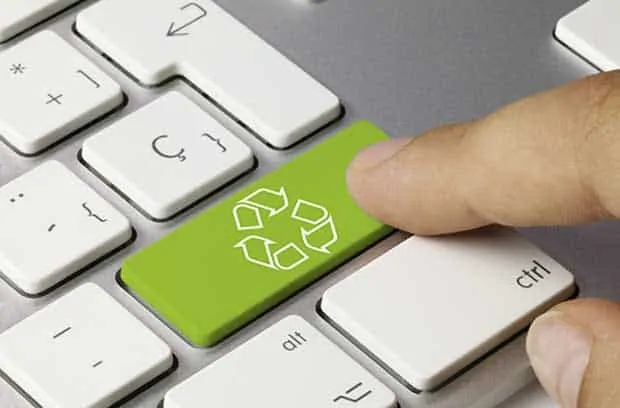


As reported in the July 29, 2020, digital news by Environmental Business International
Electronic waste represents billions in lost value
A record 53.6 million metric tonnes (Mt) of electronic waste was generated worldwide in 2019, up 21% in five years, according to the UN’s Global E-waste Monitor 2020. Only 17.4% of 2019’s e-waste was collected and recycled, meaning gold, silver, copper, platinum and other recoverable materials conservatively valued at $57 billion were mostly dumped or burned rather than being collected for treatment and reuse. The report predicts global e-waste will reach 74 Mt by 2030, making e-waste the world’s fastest-growing domestic waste stream. Global E-waste Statistics Partnership is a collaboration between UN University, International Telecommunication Union, International Solid Waste Assn. and the UN Environment Programme.
What can consumers do to help protect human health and the environment?
We can’t simply toss phones and electronics into our trash or recycling bins at home. To protect our health, water resources, and our communities we can reuse many of our devices and electronics. Try these; the links help you find local resources.
Discarded products with a battery or plug such as computers and mobile phones are electronic waste or (e-waste). Toxic and hazardous substances such as mercury, brominated flame retardants (BFR), or chlorofluorocarbons (CFCs) are found in many types of electronic equipment and pose a severe risk to human health and the environment if not handled in an environmentally sound manner.
While most electronics are not designed or assembled with recycling in mind, separate collection and recycling of e-waste can be economically viable for products containing high concentrations and contents of precious metals. Cell phones and computers contain base materials such as gold.
Recycling programs are often confronted with the costs of recycling vs material recovery markets, and because the recovery of some materials is especially challenging. Within the paradigm of a circular economy, the mining of e-waste can be considered an important source of secondary raw materials.
Thanks for helping us keep our communities safer!
For community recycling and reuse program development visit our Sustainable Materials Management website.